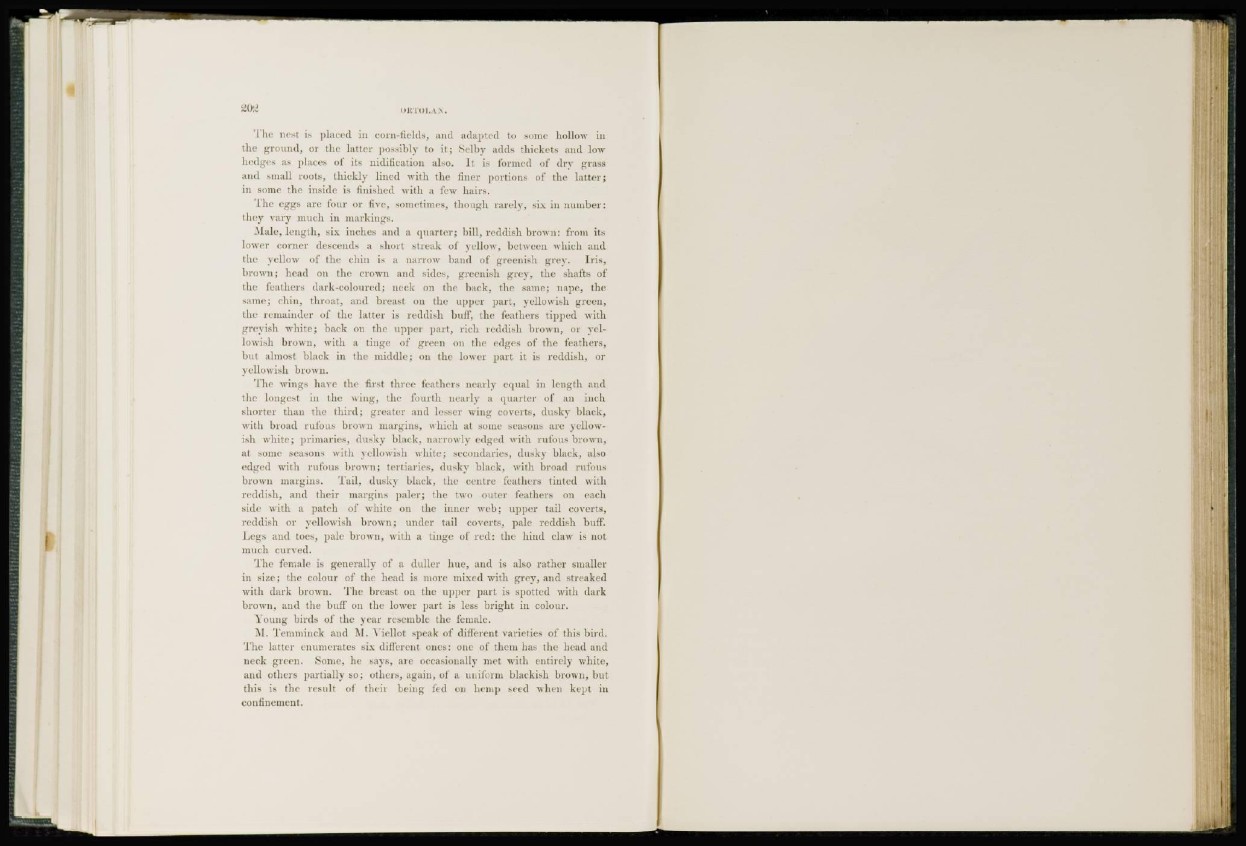
The nest is placed in corn-fieldsj and adapted to some hollow in
the ground, or the latter possibly to it; Selby adds thickets and low
hedges as places of its modification also. It is formed of dry grass
and small roots, thickly lined with the finer portions of the latter;
in some the inside is finished with a few hairs.
The eggs are four or five, sometimes, though rarely, six in number:
they vary much in markings.
Alale, length, six inches and a quarter; bill, reddish brown: from its
lower corner descends a short streak of yellow, between which and
tin' yellow of the chin is a narrow band of greenish grey. Iris,
brown; head on the crown and sides, greenish grew, the shafts of
the feathers dark-coloured; neck on the back, the same; nape, the
same; chin, throat, and breast on the upper part, yellowish green,
the remainder of the latter is reddish buff, the feathers tipped with
greyish white; back on the upper part, rich reddish brown, or yellowish
brown, with a tinge of green on the edges of the feathers,
but almost black in the middle; on the lower part it is reddish, or
yellowish brown.
The wings have the first three feathers nearly equal in length and
the longest in the wing, the fourth nearly a quarter of an inch
shorter than the third; greater and lesser wing coverts, dusky black,
with broad rufous brown margins, which at some seasons are yellowish
white; primaries, dusky black, narrowly edged with rufous brown,
al some seasons with yellowish white; secondaries, dusky black, also
edged with rufous brown; tertiaries, dusky black, with broad rufous
brown margins. Tail, dusky black, the centre feathers tinted with
reddish, and their margins paler; the two outer feathers on each
side with a patch of white on the inner web; upper tail coverts,
reddish or yellowish brown; under tail coverts, pale reddish buff.
Legs and toes, pale brown, with a tinge of red: the hind claw is not
much curved.
The female is generally of a duller hue, and is also rather smaller
in size; the colour of the head is more mixed with grey, and streaked
with dark brown. The breast on the upper part is spotted with dark
brown, and the buff on the lower part is less bright in colour.
Young birds of the year resemble the female.
M. Temminck and M. Yiellot speak of different varieties of this bird.
The latter enumerates six different ones: one of them has the head and
neck green. Some, he says, are occasionally met with entirely white,
and others partially t o ; others, again, of a uniform blackish brown, but
this is the result of their being fed on hemp seed when kept in
confinement.